Epidermal stem cells control periderm injury repair via matrix-driven specialization of intercellular junctions
- PMID: 41073376
- PMCID: PMC12514158
- DOI: 10.1038/s41467-025-64040-7
Epidermal stem cells control periderm injury repair via matrix-driven specialization of intercellular junctions
Abstract
Epidermal stem cells interact with the extracellular matrix (ECM) to regulate their differentiation and maintain skin architecture. Here, we demonstrate a role for basal epidermal stem cells (BECs)-ECM interaction in regulating adhesion molecules expressed by the periderm-the superficial epidermal cells (SECs) of the embryonic bilayered skin. Using the developing zebrafish fin fold, we identify BECs form distinct regions of collagen- versus laminin- enriched basement membranes through integrin-mediated adhesions. Mechanistically, collagen-associated BECs form desmosomes and adherens junctions (AJs) with SECs while laminin-associated BECs display reduced desmosomes but sustain AJs and actomyosin expression with SECs. Notably, we show both in vivo and in a bilayered human keratinocyte model, that laminin, compared to collagen, is sufficient to repress desmosome formation while sustaining AJs specifically at the interlayer cell contacts. In vivo, laminin deficiency enhances desmosome expression across layers and impairs the wound-healing capacity of SECs. This defect was partially rescued by genetic reduction of the desmosome protein Desmoplakin-1a, highlighting the role of ECM-dependent junctional specialization in mediating differences in SEC injury response. Overall, our findings identify that stem cells, through their matrix, establish specialized junctions in the overlying stratified epithelium, which contribute to skin healing properties.
© 2025. The Author(s).
Conflict of interest statement
Competing interests: The authors declare no competing interests.
Figures
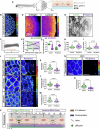
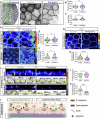
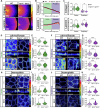

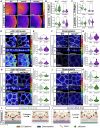
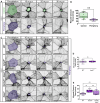

Update of
-
Epidermal Stem Cells Control Periderm Injury Repair via Matrix-Driven Specialization of Intercellular Junctions.bioRxiv [Preprint]. 2025 Jul 3:2025.07.02.662640. doi: 10.1101/2025.07.02.662640. bioRxiv. 2025. Update in: Nat Commun. 2025 Oct 10;16(1):8967. doi: 10.1038/s41467-025-64040-7. PMID: 40631183 Free PMC article. Updated. Preprint.
References
MeSH terms
Substances
Grants and funding
- R35GM150645/U.S. Department of Health & Human Services | NIH | National Institute of General Medical Sciences (NIGMS)
- R35 GM142875/GM/NIGMS NIH HHS/United States
- P01 HL169168/HL/NHLBI NIH HHS/United States
- R21 HL165342/HL/NHLBI NIH HHS/United States
- R35 GM150645/GM/NIGMS NIH HHS/United States
- P01HL169168/U.S. Department of Health & Human Services | NIH | National Heart, Lung, and Blood Institute (NHLBI)
- R35GM142875/U.S. Department of Health & Human Services | NIH | National Institute of General Medical Sciences (NIGMS)
- 957692/American Heart Association (American Heart Association, Inc.)
- R21HL165342/U.S. Department of Health & Human Services | NIH | National Heart, Lung, and Blood Institute (NHLBI)
LinkOut - more resources
Full Text Sources
Medical

